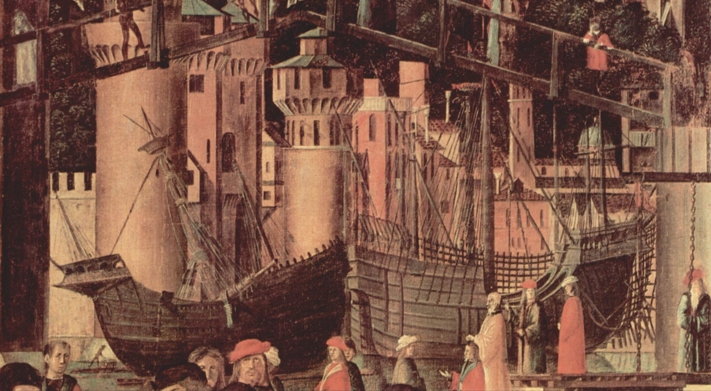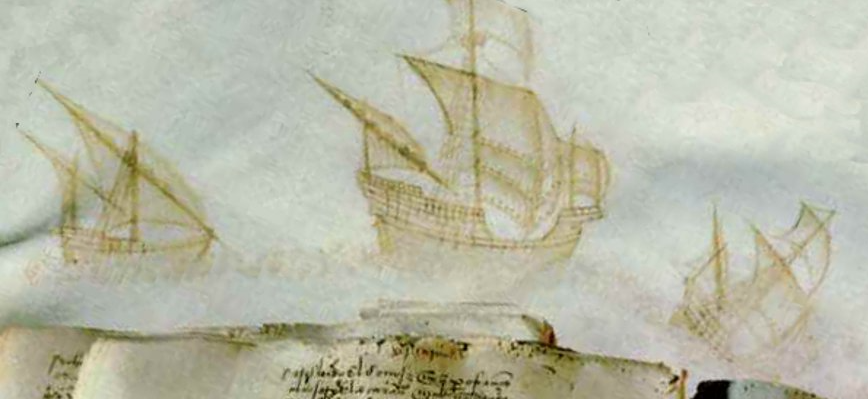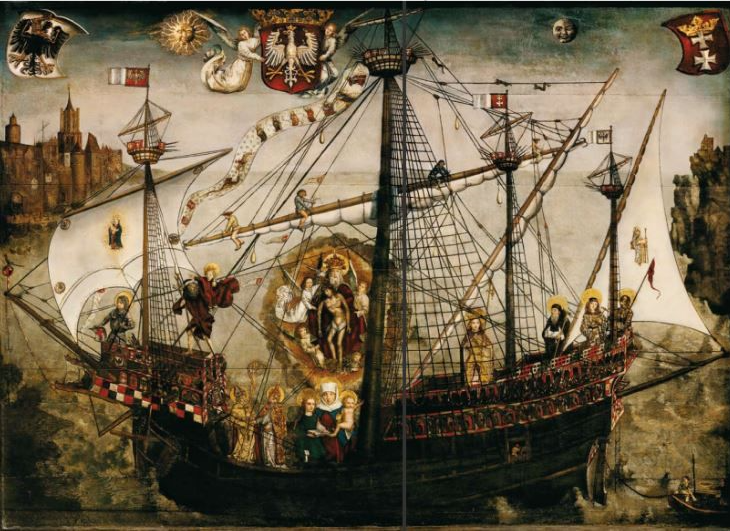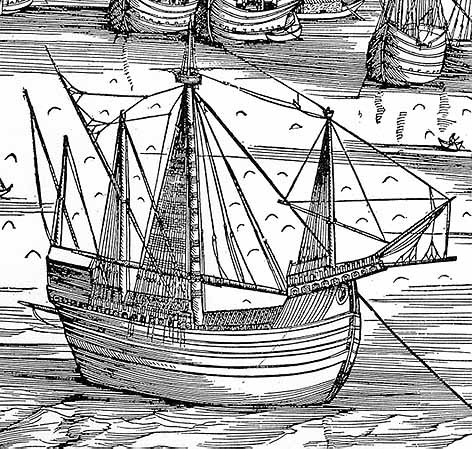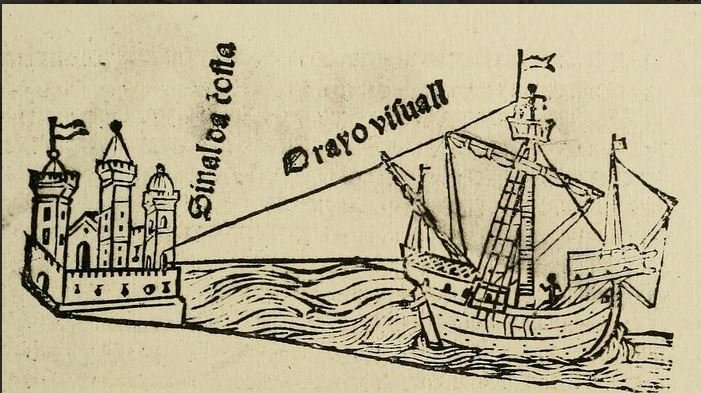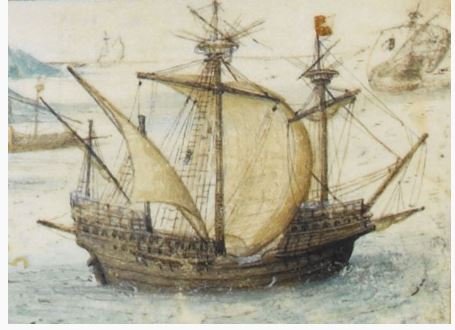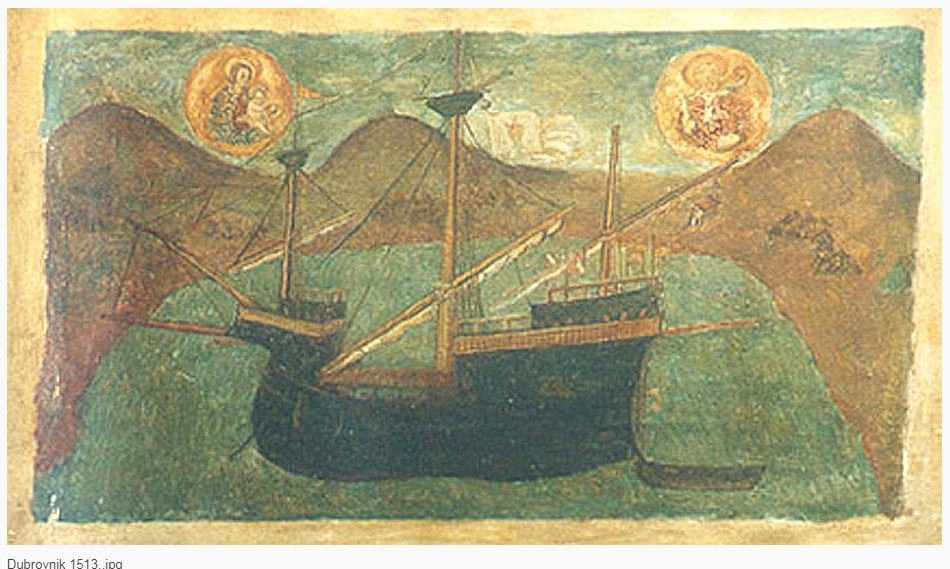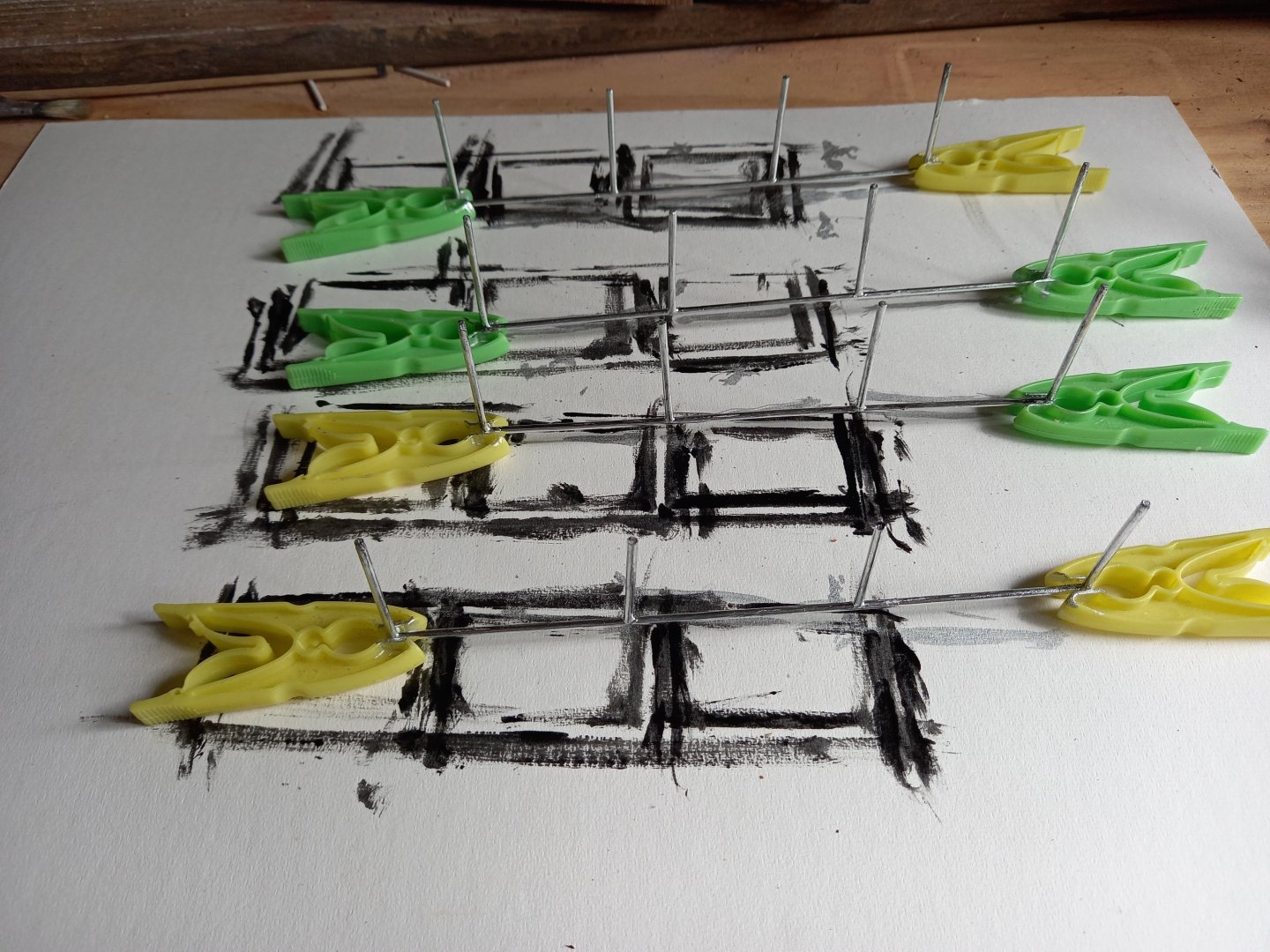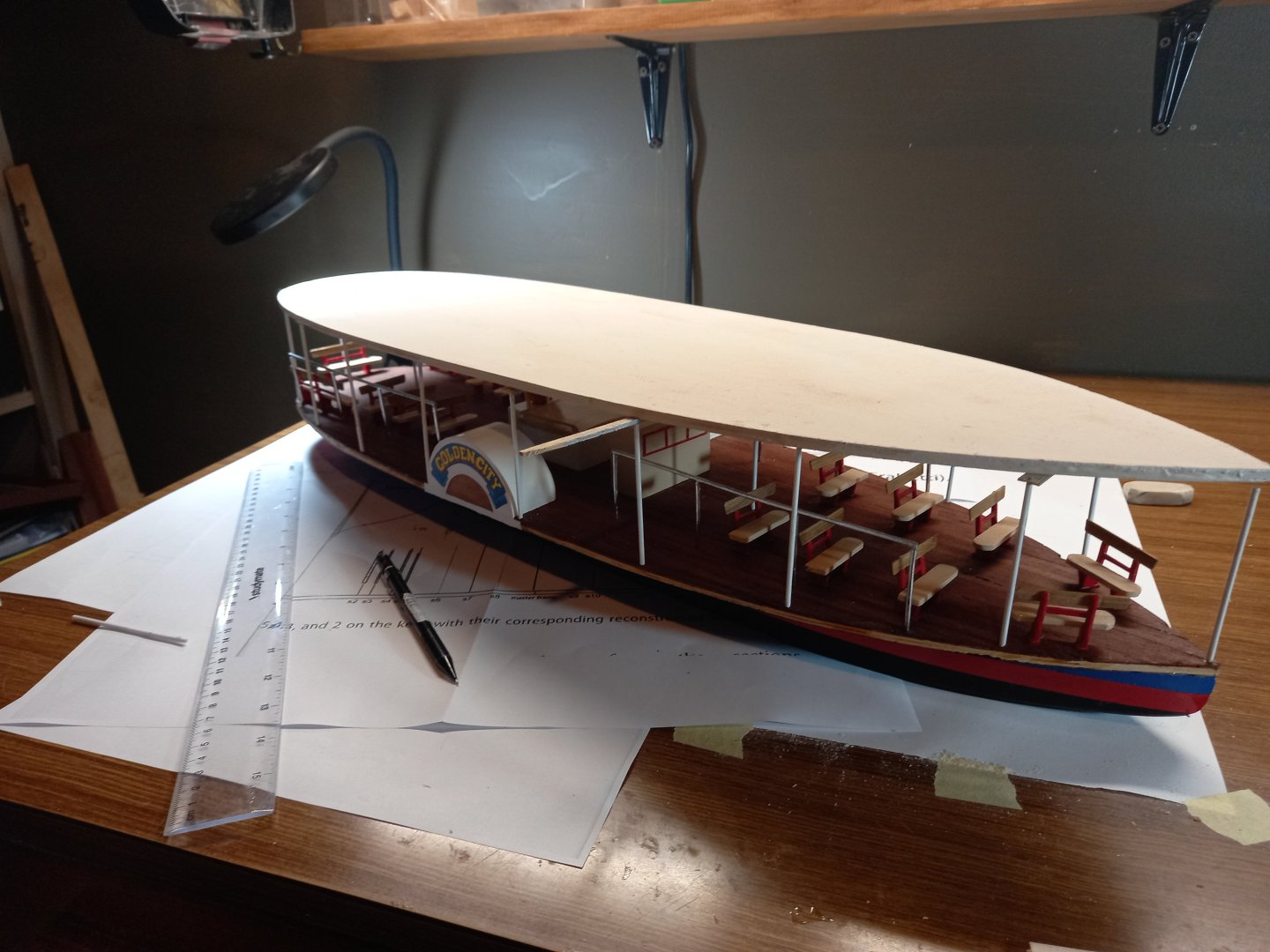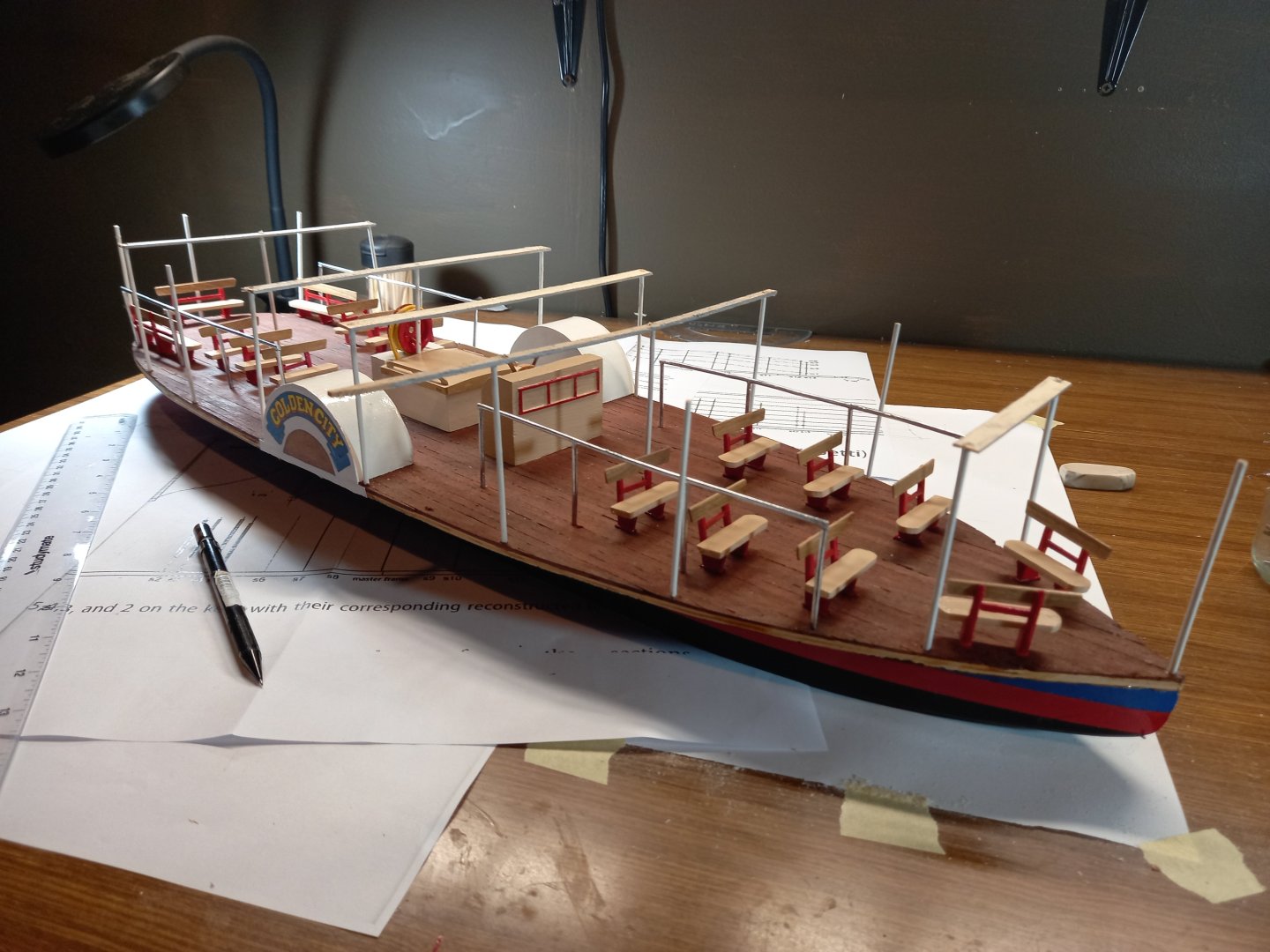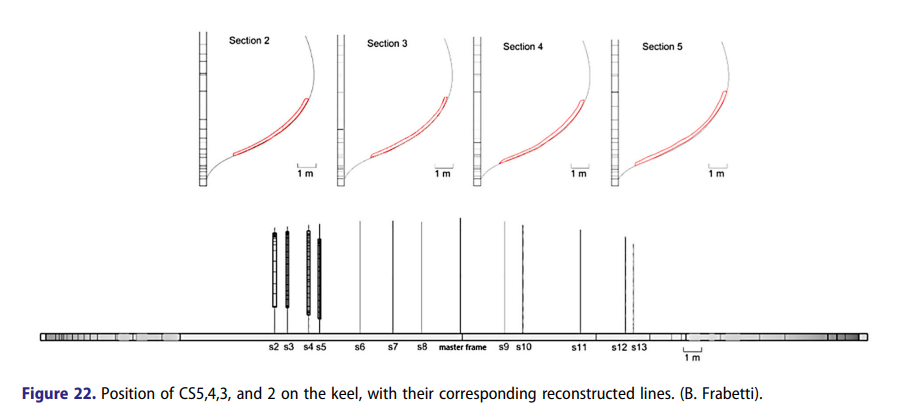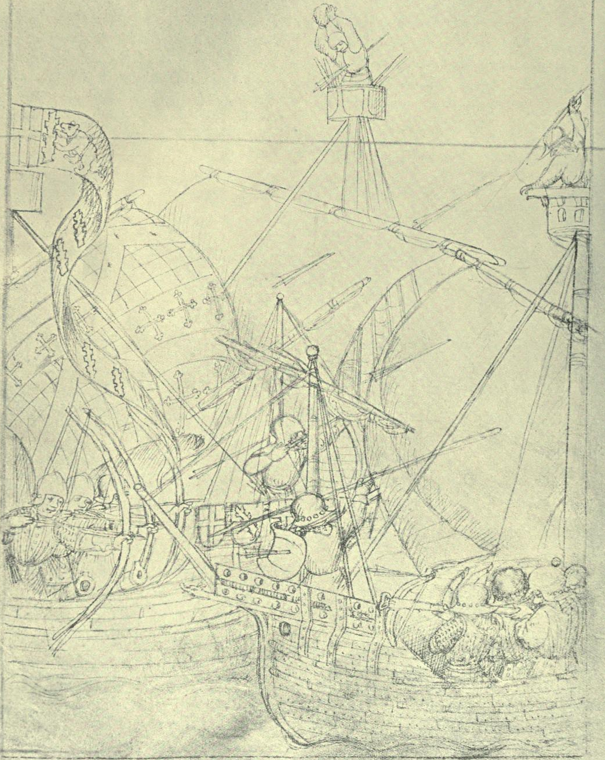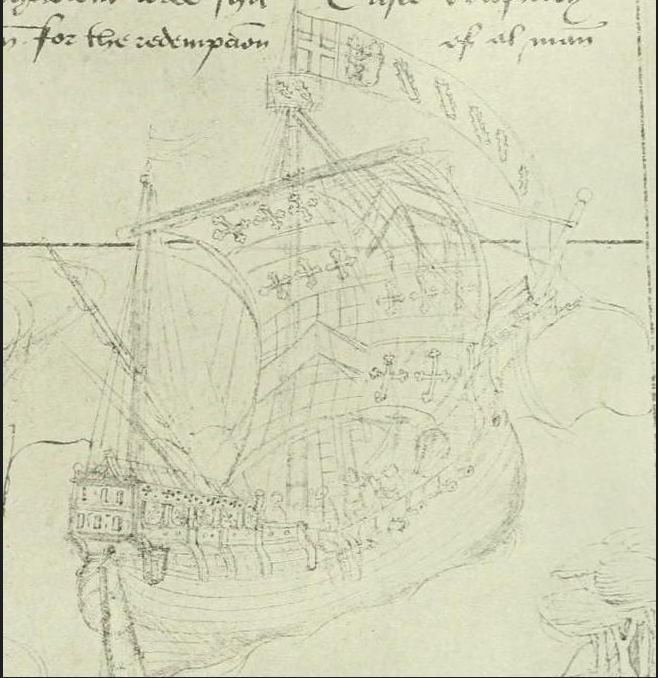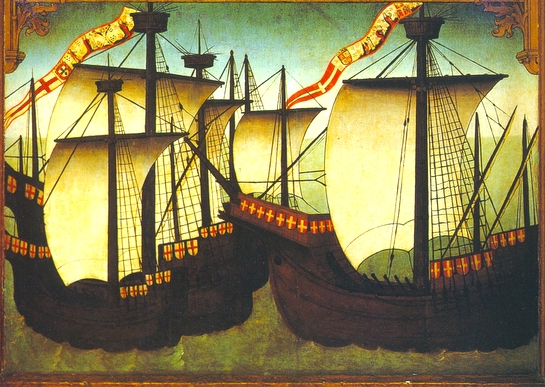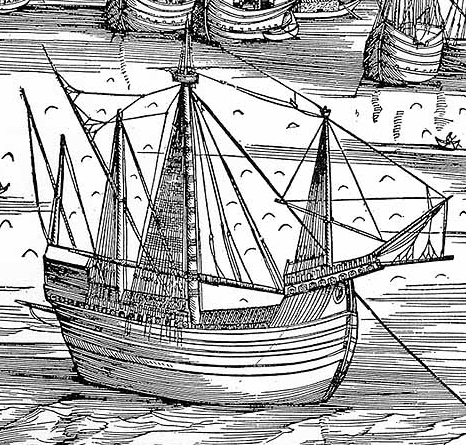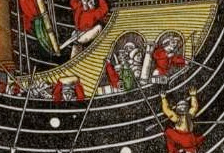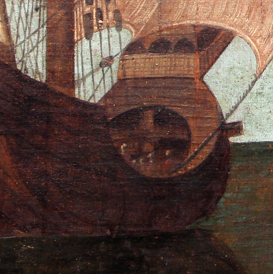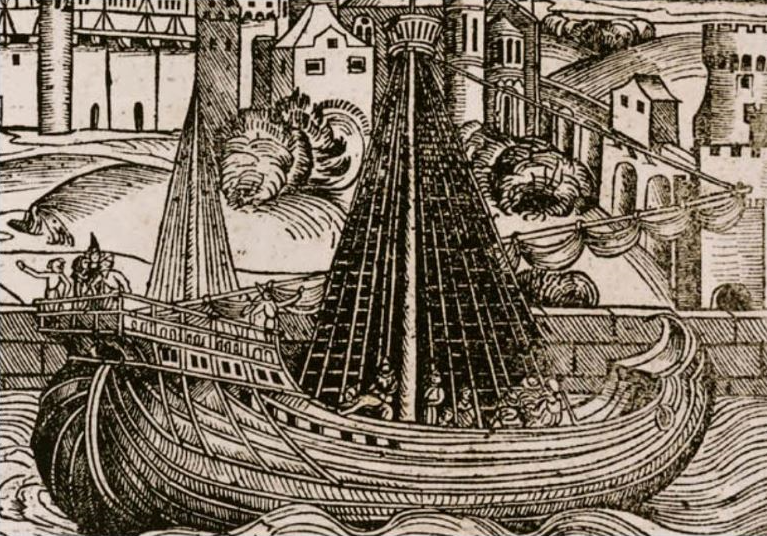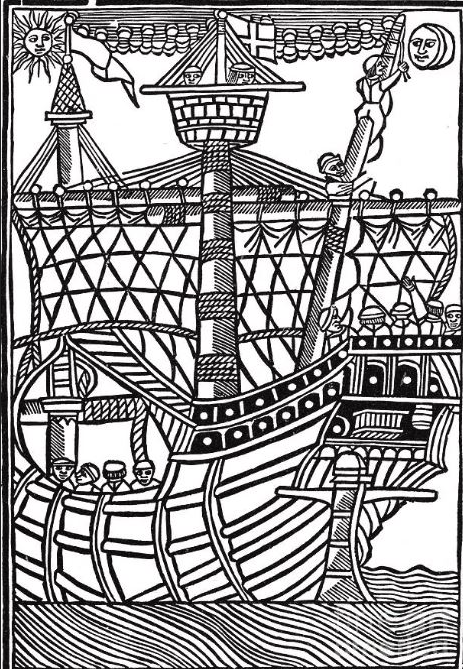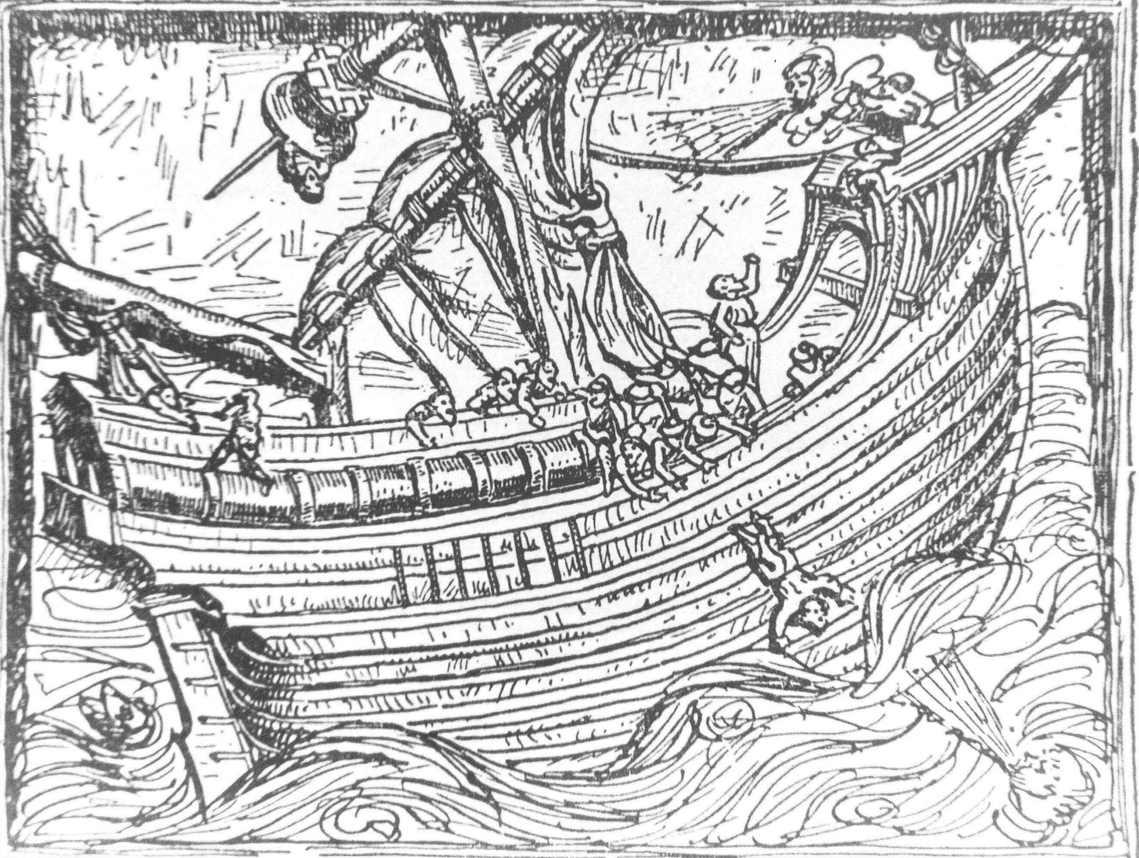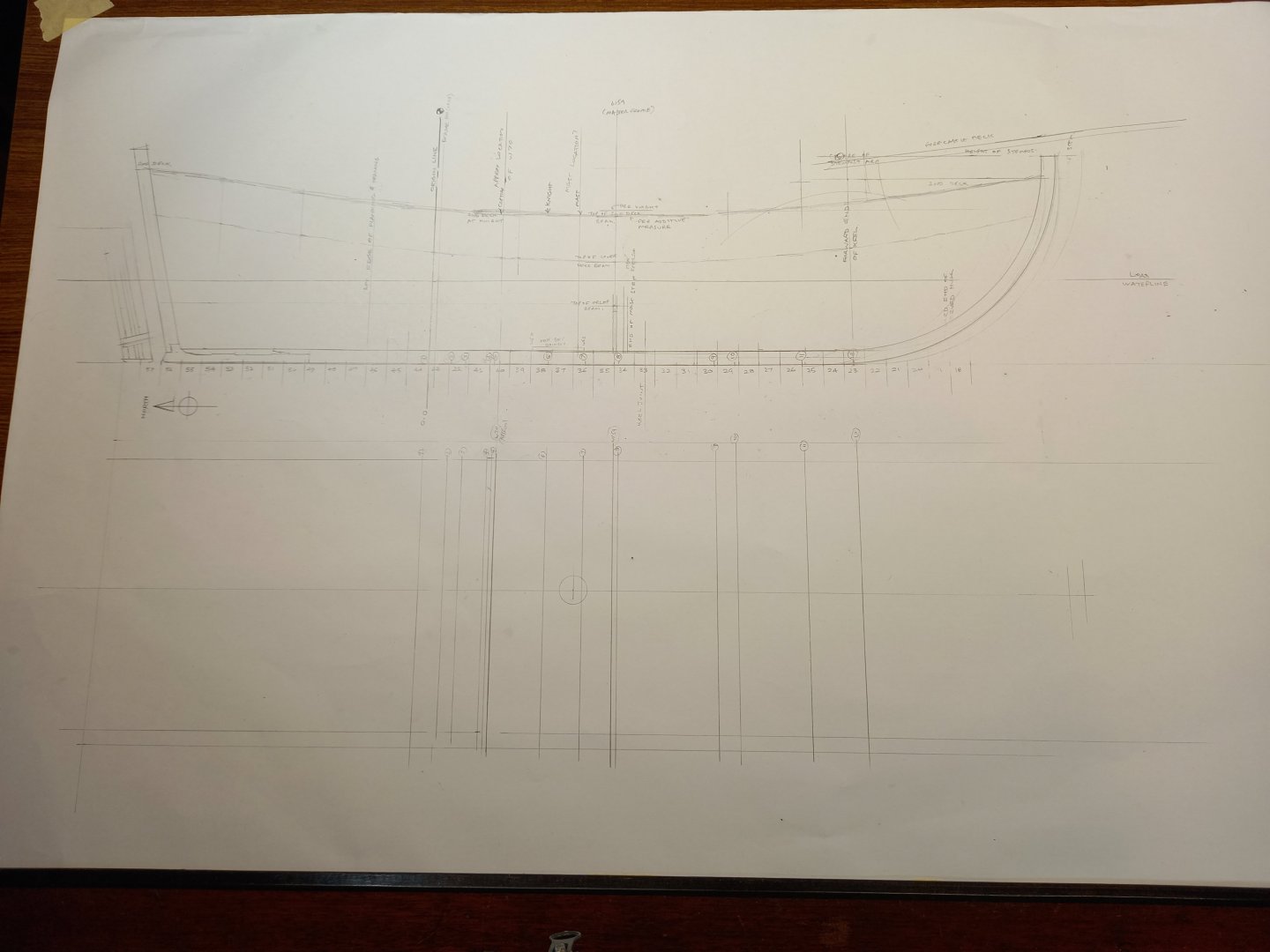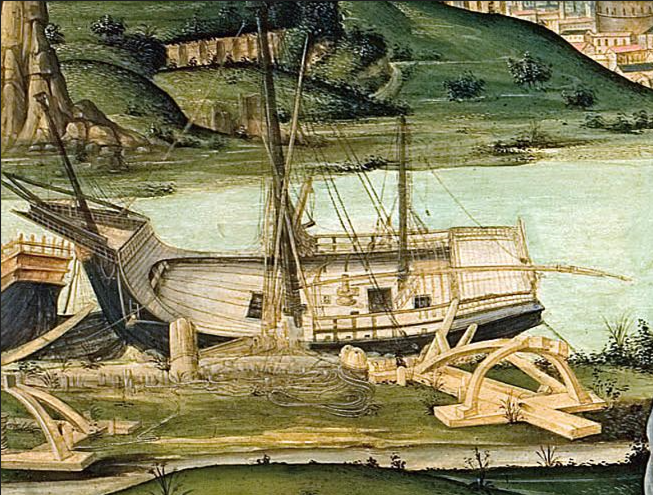-
Posts
7,975 -
Joined
-
Last visited
Content Type
Profiles
Forums
Gallery
Events
Everything posted by Louie da fly
-
I am of the opinion that 'gold' would usually have been faked with yellow paint. And though there was a lot of 'gold' decoration on important naval ships in the 17th century I've never heard of it being used in the 16th - they seem to have used bright colours toward the end of the century but I think your kit manufacturer has had a rush of blood to the brain, and that they just made it up because they thought it would look 'cool'. I think you'd be far more correct to forget the gold. If you want to, use yellow paint, but as far as I'm aware gold has no historical justification for a model from this time. Steven
-
Ferrus, if you mean sources for mast heights, the ones I ended up using (leaving out the ones that were too far outside the average) were as follows: from Barbari's panorama of Venice c. 1500 From a Munich guide to navigation (I think) 1509 1530-1534 Carrack from Leaves from the Genealogy of the Royal Houses of Spain and Portugal - the Portuguese Genealogy From an illustration for which I only have the notation "Dubrovnki 1513" Detail from one of Carpaccio's St Ursula Legend paintings c. 1490. From an early 16th century map of Hispaniola. The "Ship of the Church, Polish 15th century. There were, as I mentioned, others which were either too much bigger or smaller than the average (from 0.67 up to 1.07) and though they may well be valid, I decided to stay within the mid-range - about 0.80 to 0.87 - as being more reliable. Steven
-
Dick, yes indeed. It seems to be very common in contemporary representations. I see it not only in Carpaccio but quite a few other renditions. Around the turn of the 16th century one starts to see a double arch instead of the single one (e.g. Battle of Zonchio), but I don't like that as much. I've been doing some more 'pictorial research' for the height of the mainmast (which was not found in the wreck). Taking into account 15 contemporary images, allowing for variations between individual ships, and even more for artistic license, and discarding figures too far outside the average, the ratio of the height if the mast above the gunwale and the overall length (forward end of stempost to after end of aftercastle) seems to be at about 0.85. With an overall length on this model of about 430mm, that works out to about 390 mm. Then if I add the distance between the gunwale and the upper surface of the keel, we get another 80mm, so mast height up to the top of the crosstrees would be about 470mm. I'm having to do some work in working out frame positions. The archaeological reports use at least 4 systems of location - first there was a grid with 1 metre squares running over the whole site. Then they numbered all the frames that had survived. Plus they had a 'zero' point on one of the planks near the aft end of the wreck that distances were measured from. And the original investigation took cross-sections at various points along the keel. As none of these seem to be referenced very well to each other, I'm busily trying to reconcile them all to a common system. The numbered frames are about 500mm apart (i.e. between the centre of one and the centre of the next adjacent), so I've got a fair idea of where each is in relation to the rest. Then the latest report has given a diagram (with a key showing how big a metre is) showing the locations along the keel of the cross-sections and of the Master Frame, which is frame No. 59 (see diagrams in post #26). So taking Frame 59 as my starting point, and the locations along the keel of the cross-sections, I can (I hope) work out which frames each of the cross-sections is closest to. And then try to work out the lines and fill in the gaps. Unfortunately, the bow and stern have not survived (see picture in my original post), so their shapes are largely a matter of educated guesswork. And the same applies to the upper works. I'm thinking very seriously about taking a page out of Woodrat's book and making a solid half-hull, and basing my frame shapes on that. I have a cunning plan to make this - we'll see how it works out. Note to admin - can I get this log moved from "Up to 1500 AD" to "1501-1750" please? If, as I believe, she was built in 1503, I've put it on the wrong section. Thanks. Steven
-

Remains of 500 year-old shipwreck: Dated 2019
Louie da fly replied to Allegheny's topic in Nautical/Naval History
I wonder when the archaeological reports will start to appear. It'd be nice to know more about this ship. Steven -
Keith, it's an Australian brand, though I'm sure there'd be equivalents elsewhere, and apparently used by automobile modellers. The one I have is SMS brand and is called "hyperchrome", and it's alcohol-based and is to be used with an airbrush, though I just used an ordinary watercolour paintbrush and it worked. The guy who put me onto it said to put down an undercoat of black matt, then another coat of black gloss before applying the chrome (which needs several coats). I didn't ask whether the undercoat was supposed to be acrylic or enamel, so I experimented - enamel is the way to go. Now you know as much about it as I do . Steven
- 110 replies
-
- Paddlewheeler
- Ballarat
-
(and 3 more)
Tagged with:
-
I've left this for awhile, but it's really time I got back to it. I got held up by not knowing how I could duplicate the chrome pipe of the rails that divide passengers from storage areas. Fortunately, a member of my local modelling club put me onto a paint that actually does the trick - not just like yer usual 'silver paint' look, but actual chrome. And this was on bamboo like you get in kitchen skewers, so it's quite an achievement. And I've put in the uprights that hold up the awning, and solved (I hope) the problem of the keeping the awning piece horizontal throughout, avoiding it sliding down the uprights getting all askew. I just glued the uprights, into holes in crosspieces, so the top of each upright (they're all the same length) is flush with the top of the crosspiece. Simple solution, really, and it'll be invisible when the model is complete. Still in progress. And here it is with the awning dry fitted. Steven
- 110 replies
-
- Paddlewheeler
- Ballarat
-
(and 3 more)
Tagged with:
-

Remains of 500 year-old shipwreck: Dated 2019
Louie da fly replied to Allegheny's topic in Nautical/Naval History
Rik, that first link seems to be basically the same article as in the original post. I do like the fact that there's a video. And the ship's boat is quite a find. That and some of the deck furniture (for example the pump) give some idea of the size of the vessel itself. It's now being referred to as Okänt Skepp, but that just means "unknown ship". A good enough name for me. Not much info available on-line about her even now. The Gribshunden, which I mentioned in my first post, has quite a bit more information available. Steven -
Ferrus, no swivel guns were found. The Beat to Quarters Tumblr article gets several things wrong - the guns were never mentioned in the archaeological report as being cargo; in fact they were distributed through the wreck in positions that suggest they were for the ship itself. On the other hand, big cannon wheels were found in the wreck, more appropriate to land-based cannons, and as the ship was under hire to the King of France who was having himself a war in Italy, it's likely these were cargo - and perhaps that the barrels were recovered by a salvage team that tried to recover what was most valuable from the wreck soon after she went down. Regarding the matter of bonaventures, I'm still thinking about it. That a ship could have them because of her size is no guarantee that she did. The great majority of representations show a single mizzen. Steven
-

Remains of 500 year-old shipwreck: Dated 2019
Louie da fly replied to Allegheny's topic in Nautical/Naval History
Unfortunately a few seconds after opening the link it went to NY Times advertising and demanding I log in and let them have access to my personal stuff. Looked interesting up to that point, though. Steven -

Orks Dakka Jet by RGL - FINISHED - Warhammer
Louie da fly replied to RGL's topic in Non-ship/categorised builds
Cyberpunk. -

Remains of 500 year-old shipwreck: Dated 2019
Louie da fly replied to Allegheny's topic in Nautical/Naval History
I originally thought this was the Gribshunden, a Danish royal ship, but apparently not. See https://sv-m-wikipedia-org.translate.goog/wiki/Okänt_skepp_från_1500-talet_i_Östersjön?_x_tr_sl=sv&_x_tr_tl=en&_x_tr_hl=en&_x_tr_pto=sc Interesting in its own right! I hadn't heard of this one before. I've bookmarked it. Thanks for posting. Steven -

Orks Dakka Jet by RGL - FINISHED - Warhammer
Louie da fly replied to RGL's topic in Non-ship/categorised builds
Good grief! Steven -
Johnny, yes I agree. And yes, some have shields attached to a higher rail. If you look at the very first picture in this thread (don't look too hard, it's loaded with inaccuracies!) you can see that 'Lomellina I' has them on the forecastle and aftercastle, and I'm thinking seriously about following suit with her younger sister. The flags belong to the Lomellini family, but perhaps the shield designs are those of the men-at-arms on board. And does the ship carry those shields when not expecting to be in combat? Who knows? Steven
-
Ferrus, this is an issue I'm very aware of, and in fact I've been arguing the point for over 10 years. See . Regarding the museum model, I'm not taking any notice of it at all. It's wrong in so many ways - I don't like to criticise , but the guy who built it had no idea of the configuration of a carrack. I've been reading through the latest paper on the shape of Lomellina's hull (see link in post #17 above). Here's what is known from the archaeological results (with a bit of tweaking of frame shapes to allow for the fact that the shape would have been deformed by the weight of the overburden of silt). They recorded 12 cross-sections, 8 of the "surviving" frames - that reached all the way to the keel (CS 6 to CS 12 also referred to as S6 to S12), 4 of partially existing frames (CS 2 to CS 5). Here are the results. Though I'm prepared to accept their research data I do have reservations about their conclusions as to the lines of the hull. If you're interested you can see them in the paper linked in post #17 above. So I'll 'go off on my own' and see if I can't work out a set of lines I'm happier with, that fit in better with what I know of the shapes of carracks from contemporary representations, particularly those of Carpaccio and Botticelli (see pics in earlier posts). Steven
-
You're quite right, and I hadn't been figuring the height of the gun pedestals into the equation. Thanks. And in fact, zooming in on the Zumia picture the guns do seem to be up off the gunwale (OTOH, the first of the Beauchamp Pageant pics shows the barrels resting directly on it). And I've found another pic with 2 normal sized people up against the gunwale. "1486 Pilgrim Book by Breidenbach. Ship building in Venice" The guy on the right seems to have it coming up only to his hips, while the other has it up to his chest. The second guy seems to be painting the side of the hull, though, and I believe he might be kneeling down to do it without overbalancing. All of this inclines me to accept a lower gunwale height - possibly even less than 1.2 metres. The legal requirement for balustrades on balconies (at least here in Oz) is 1.0 metres - to stop people tipping over the edge and falling. I'd say that would be my absolute minimum height for the gunwale. Getting there . . . Steven
-
Thanks everybody for the likes and comments. Early stage at the moment. I'm currently thinking about the height of the gunwales to the weather deck. As well as the 'theoretical' height in the cross-sectional view in my first post, there are a few contemporary pictures which I'm hoping will help. There's this image from the so-called Beauchamp Pageant (Cotton MS Julius E IV), but that's not a lot of help, as the human figures are obviously over sized (as was usual at the time). There are VERY few contemporary pictures that accurately show human figures at the correct scale. This one from the same source is not high resolution, but I believe the scale of the figures is probably about right - The picture of the Battle of Zonchio (1499) shows the gunwale as being almost shoulder height But there's a detail from Carpaccio's Ursula Legend that seems to show the gunwale coming up to about people's waists. Then there's this one from 1493 that seems to show the same. This one of Columbus' ship from the 1502 Libre de Consolat dels fets maritims Barcelona shows it about middle of the chest - Then there's this one from Zeiriksee in the Netherlands of 1506, showing it nearer the waists of the human figures. And from Jonah by Bellano Basilica of San Antonio, Padua, 1514 - chest height. As Lomellina was Genoese, I'd be inclined to follow Italian images for preference. And it needs to be borne in mind that the gunwales are just that - wales that were the base for (swivel) guns. So they should be somewhere above waist level for the gunner but below shoulder level. So, assuming an average height for this time and place of perhaps 5'6" (1.68 metres), I'd be looking at between 1.2 metres (about 4 feet) and 1.3 metres (approx 4'3"). Returning to the issue of masts, there could possibly be one or two mizzens. A votive table of 1475 of the parish of San Pedro de Zumaia in Spain, commemorating a battle between Spanish and Portuguese forces, shows the largest ship with a mizzen, and a bonaventure mizzen behind it. And a detail of a panorama of Venice of 1500 by Barbari shows a similar thing on a merchant ship. However, the great majority have only a single mizzen. Is the Lomellina big enough to warrant two? She was certainly pretty big for the time, bit I'll have to think about it. Steven
-
Thanks everybody for the likes and comments. It's nice to have finished the build and though I'm painfully aware of places where I didn't get it as right as I'd have liked to, I'm actually very happy with this. MikkiC, I've already started work on plans for the next one - see It'll be a while before I start making sawdust, but the design process is under way. Steven
- 508 replies
-
Still figuring out the plans. I've now got a pretty good idea of the lines of the main and lower decks and the orlop, the configuration and position of the stempost (awaiting confirmation from France!), and the location of the mainmast, the halyard knight and the capstan, plus where on the keel the 12 cross-section views were taken. Still a bit up in the air, but I believe I'm on the right track. And she's starting to look rather pretty! Though there's no archaeological evidence of a foremast or mizzen - they would both have been relatively small and it's unlikely they'd have been stepped on the keel - I am completely certain a ship of this size at this time would have had both. Now I'm thinking about the height of the bulwarks above the main (weather) deck, and the height, angle and configuration of the forecastle. The Botticelli painting The Judgment of Paris contains a carrack which can be seen, unusually, from above, and it looks like it has a poop deck. Perhaps I'll give the Lomellina one as well. Steven
About us
Modelshipworld - Advancing Ship Modeling through Research
SSL Secured
Your security is important for us so this Website is SSL-Secured
NRG Mailing Address
Nautical Research Guild
237 South Lincoln Street
Westmont IL, 60559-1917
Model Ship World ® and the MSW logo are Registered Trademarks, and belong to the Nautical Research Guild (United States Patent and Trademark Office: No. 6,929,264 & No. 6,929,274, registered Dec. 20, 2022)
Helpful Links
About the NRG
If you enjoy building ship models that are historically accurate as well as beautiful, then The Nautical Research Guild (NRG) is just right for you.
The Guild is a non-profit educational organization whose mission is to “Advance Ship Modeling Through Research”. We provide support to our members in their efforts to raise the quality of their model ships.
The Nautical Research Guild has published our world-renowned quarterly magazine, The Nautical Research Journal, since 1955. The pages of the Journal are full of articles by accomplished ship modelers who show you how they create those exquisite details on their models, and by maritime historians who show you the correct details to build. The Journal is available in both print and digital editions. Go to the NRG web site (www.thenrg.org) to download a complimentary digital copy of the Journal. The NRG also publishes plan sets, books and compilations of back issues of the Journal and the former Ships in Scale and Model Ship Builder magazines.



